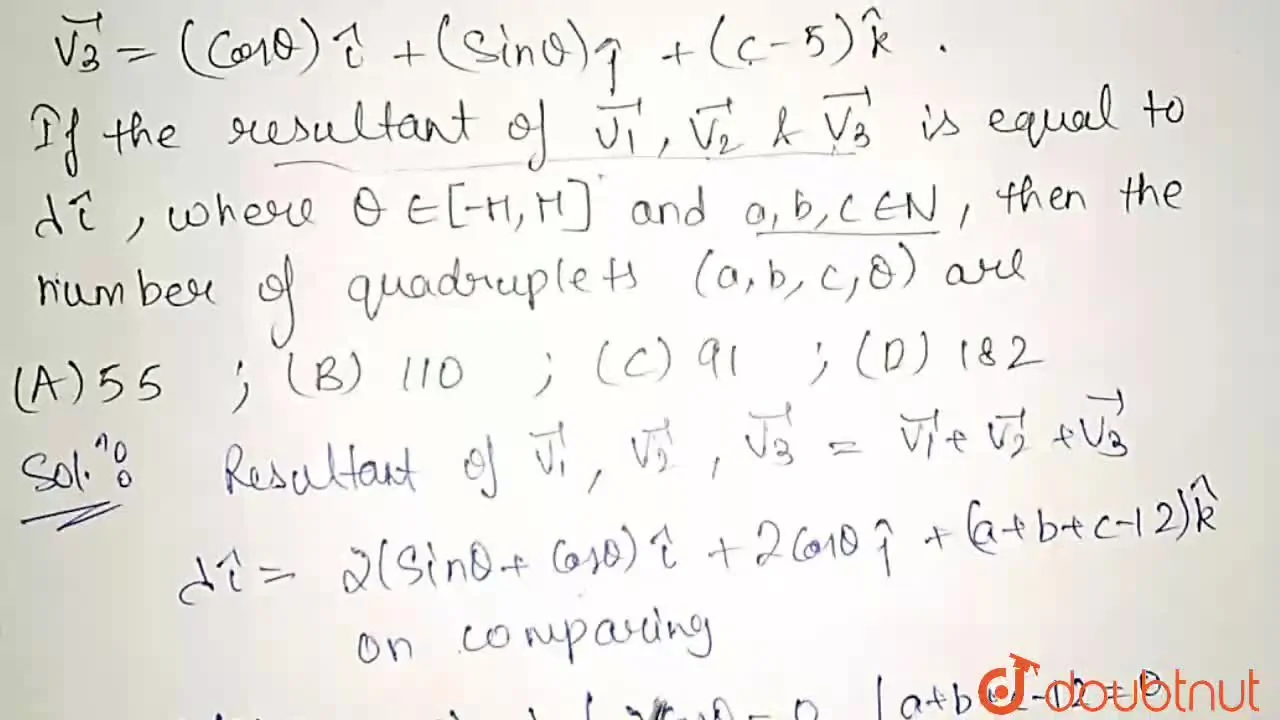Consider three vectors
→V1=(sinθ)ˆi+(cosθ)ˆj+(a−3)ˆk,→V2=(sinθ+cosθ)+ˆi+(cosθ−sinθ)ˆj and +(b−4)ˆk
→V3=(cosθ)ˆi+(sinθ)ˆj+(c−5)ˆk. If the resultant of →V1,→V2and→V3 is equal to λˆi, where θ∈[−π,π] and a,b,c∈N, then the number of quadruplets (a,b,c,θ) are
55
110
91
182
The correct Answer is:B
Step by step video & image solution for Consider three vectors vec(V_(1))=(sin theta)hati+(cos theta)hatj+(a-3)hatk, vec(V_(2))=(sin theta+cos theta)+hati+(cos theta-sin theta)hatj and +(b-4)hatk vec(V_(3))=(cos theta)hati+(sin theta)hatj+(c-5)hatk. If the resultant of vec(V_(1)),vec(V_(2)) and vec(V_(3)) is equal to lambda hati, where theta in [-pi, pi] and a, b, c in N, then the number of quadruplets (a, b, c, theta) are by Maths experts to help you in doubts & scoring excellent marks in Class 12 exams.
Similar Questions
sin3θ+sinθ−sinθcos2θ=
View SolutionProve that cos3θ−sin3θcosθ−sinθ=1+cosθsinθ
View SolutionProve that : sinθcos3θ−cosθsin3θ=14sin4θ.
View SolutionProve that:
(a) sin2θ1+cos2θ=tanθ (b) 1+sin2θ+cos2θ1+sin2θ−cos2θ=cotθView SolutionProve that cos3θ+sin3θcosθ+sinθ+cos3θ−sin3θcosθ−sinθ=2
View SolutionProve that:
sin4θ=4sinθcos3θ−4cosθsin3θView Solution2sinθ⋅cosθ−cosθ1−sinθ+sin2θ−cos2θ=cotθ
View Solution1+cos2θ+cos6θcos4θ=sin3θsinθ.
View SolutionProve that : cos4θ+cos3θ+cos2θsin4θ+sin3θ+sin2θ=cot3θ
View SolutionProve that : sinθ+sin3θ+sin5θcosθ+cos3θ+cos5θ=tan3θ
View Solution


